
NexGen Hospitality announced today the acquisition of the Versy Hotel in Chicago, IllinoiS.🔸 This boutique hotel with 137 rooms, located on Diversey Avenue, will be managed by the renowned hospitality group Genuine Hospitality from St. Louis, Missouri.🔸 The hotel is situated in the historic Arms Diversey building from the 1920s in the northern part of Chicago.🔸 Originally the residence of Bix Beiderbecke, the famous jazz musician, the building later gained popularity among 1990s rock stars.
Create: May 22, 2024 Edit: May 22, 2024 International News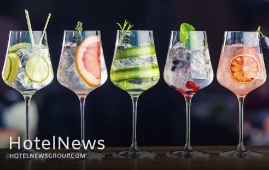
After years marred by a global public health crisis, many of us are lapping up in-person social gatherings with friends, family and colleagues. Morning catch-ups over coffee, afterwork happy hour at the favorite waterhole or weekend drinks in town had mostly been replaced with coffees-to-go, virtual apéros, or alfresco drinking in winter like in summer. Consumers have become today their own baristas and bartenders, imbibing alone at home or at a distance outside. So how, and with what, will we quench our thirst? Here is EHL’s selection of the top drink trends in 2022. In this pandemic-era, there is no doubt that the megatrends for the new year will center around healthier and ‘cleaner’, more sustainable, premium and socially responsible products in line with the mantras – good for me, good for the planet – and quality over quantity. With movements like mindful drinking and “sober curious” gaining popularity, research indicates that alcohol consumption has declined with younger generations drinking less as they show greater interest in holistic wellness and health. And the beverage industry has been paying attention to these shifts in concern, consciousness and habits. Functional and healthy beverages are on the rise, and no and low alcohol ready-to-drink offerings from North America to Europe and Asia-Pacific have boomed as they prove to be both a more convenient and ‘safer’ option in a world still plagued by COVID-19 measures and barrier gestures. But globally, we’re seeing an array of interesting new product developments, packaging innovations and surprising mergers and acquisitions with the lines between the health movement, the low- and no- alcoholic category and the wider drinks industry becoming increasingly blurred. Beyond these general tendencies, we take a look at six particular drink trends for the year ahead. 1. CBD-infused relaxation drinks For those of us who frequent trendy bars, a controversial yet very 2022 new trend has found its way onto cocktail menus in only the most avant-garde of venues. 2. The bubble tea craze goes global Despite being invented in the 1980s, bubble tea is set to see its popularity soar to new heights. From the US to Germany, China to Brazil, the bubble tea industry is going global with its market expected to grow by almost $2 billion to reach $4.3 billion by 2027. The refreshing Taiwanese tea-based drink with its tapioca or fruit jelly ‘bubbles’ is appealing to health-conscious individuals enjoying the healthier variants low in sugar, with organic soya milk, green tea or fruity mixes as well as a younger generation seduced by its 200 or so different flavor combinations and even more customizable options making for a truly unique, tasty and fun drink. 3. Fermented drinks as a health-booster Increased awareness on the importance of fueling our body with quality and nutritious food and drink is driving a rapid growth in fermented beverages, occupying a significant portion within the functional and healthy drinks category. It’s estimated that probiotic beverages are expected to achieve over $77 billion in sales by 2025, almost double the revenue generated worldwide in 2018. While kombucha has been topping the leader board for some years, it’s now got some serious competition. Water kefir, with its more diverse probiotic strains shown to help boost the immune system and aid digestion, is gaining momentum and creeping into the mainstream. As is the fermented Mexican soda Tepache – another healthy, flavorsome, sustainable alternative to kombucha. While not new in itself, it has promising prospects in this ‘health-conscious’ era, but hey, it’s just a gut feeling! 4. Wines and champagnes with star power Celebrity beverage endorsements are nothing new. Think George Clooney and Nespresso, Jennifer Aniston and Smart Water, or countless sporting stars endorsing energy drinks. But expect to see more and more vineyards and champagne houses partnering with big names to capitalize on their glamorous images and extend their respective brand portfolios. After John Legend, Kylie Minogue or Brad Pitt, Cameron Diaz is the latest celebrity to venture into the wine business with her “clean” wines. The range comprises of an organic and vegan French rosé and Spanish white with no added sugar, with Diaz tapping into both the wellness trend and that of the growing ‘thirst’ for ‘pink’ wine. Such partnerships are also strategic in helping introduce wines and champagnes to new consumers, in particular millennial drinkers drawn to celebrity and wellness lifestyles, and who aren’t impartial to the Instagrammable aesthetic of a fizzy or rose-tinted drink. 5. Boxed wine as a sustainable (and sanitary) choice Did you know that during the COVID-19 pandemic, bag-in-a-box wine was the supermarket alcoholic “go-to” beverage? The draw? Beyond the product within the bag, boxed wine is easier to store, it better preserves open wine, and is proving a more hygienic and sustainable option, in particular for restaurants. With each three-liter box generating about half the carbon dioxide emissions to that of a glass bottle, boxed wine is also cheaper to transport, stock and more environmentally-friendly. Something that even the more premium wine houses can’t ignore. While wine connoisseurs may jump to the conclusion that boxed wine equates to poor quality, industry experts are suggesting that that’s changing, and fast, as sales are forecast to continue surging around the world in 2022. 6. Canned cocktails with premium products While some may have enjoyed following online mixology tutorials to create their own home-made cocktails, many long for the days when original creations were served ready-made for immediate consumption. Well, spirit brands and hotel chains like the Marriott have wasted no time to offer the perfect solution and create a variety of delicious, bartender-quality, ready-to-drink cocktails in cans. Tipped to be the hottest trend in the alcoholic beverage space in 2021, the development of prepared cocktails-to-go has, according to Nielsen Premium Panel data, accelerated 171% in 2020, and shows no signs of slowing down in 2022. With high-quality ingredients, authentic flavors, options between low-calorie, sugar and alcohol or premium spirits, and convenient and sanitary packaging – grab-and-go cocktails are here to stay. 7. Spiked sodas and alcohol-free beers and spirits With interest in low and no alcohol by volume (ABV) drinks skyrocketing over the last few years, more and more people are looking for a middle ground between tee-total and drinker, between functional and indulgent, between high-quality and convenience. Consequently, low and non-alcoholic beverages are flooding the market and is the space to watch. From non-alcoholic beers and premium mocktails by spirit brands to the boom of hard seltzers now spilling over into hard coffees and kombucha – consumers are going to be spoilt for choice. Whether it’s wanting something with less sugar and alcohol, with premium products, looking for a slight ‘kick’ in traditional non-alcoholic beverages or an alternative to beer, this growing category ensures there’s something for every taste bud and type of drinker. Drink trends 2022: a toast to good health As we look to turn our backs on 2021, and raise our glasses to a new year, the question still lingers as to whether the drinking habits developed in a COVID-era will prevail in a post-pandemic world. While there is still so much uncertainty, what is clear is that the increasing consumer interest in health, wellness and mindfulness is shaping the beverage industry as a whole as it seeks to quench this thirst for holistic balance. For being able to choose alcohol-free beverages without having to sacrifice flavors, fizz or authenticity. For indulging in a drink without having to abstain completely. For a return to more simplicity with natural and ‘clean’ products. For drinking less in quantity but better in quality.
Create: Jan 1, 2022 Edit: Jan 1, 2022 Coffee Shop
Hotels have been around for as long as we can remember, but where in history is the origin of this core sector of the tourism industry? While it might come as a surprise for many, the three oldest hotels in the world are all located in Japan and have been operating for hundreds of years. While Japan can boast this very interesting fact, the real champion of historic accommodation facilities is Europe with a large variety of old hotels. In this context, Tourism Review presents the top 10 oldest hotels on the Old Continent – each country represented by only one hotel. Hôtel Cour du Corbeau (France), est. 1528 Located in the heart of Strasbourg and a stone's throw from the cathedral, the Cour du Corbeau is one of the oldest hotels in Europe, being in operation since the beginning of the 16th century. At the same time, it is also one of the most beautiful architectural ensembles of the Renaissance period. The city-owned hotel offers 63 luxurious rooms to its guest, guaranteeing top-notch comfort and an experience to remember. Hostal dos Reis Católicos (Spain), est. 1499 Owned by the Paradores chain (in the ownership of the Spanish government), the Hostal dos Reis Católicos was built as a royal hospital to accommodate pilgrims traveling to Santiago de Compostela. Today, it continues to welcome visitors from all parts of the world in more than 100 rooms and boasts incredible luxury in the heart of one of Spain’s most important cities. Hotel Damier (Belgium), est. 1398 Located on the Grote Markt square in Kortrijk, Damier boasts an impressive history. The first mention of the hotel dates back to the 14th century, with the building boasting an astonishing Rococo façade from 1769. Today, the hotel offers 65 luxurious rooms that will certainly impress even the more demanding individuals. Hotel De Draak (Netherlands), est. 1397 Founded in 1397 and located in the historic center of Bergen op Zoom, Hotel de Draak is the oldest hotel in the Netherlands. It is possible that the hotel is even older, but a huge fire destroyed the city archives in the same year. It is currently owned by the Hazen family and boasts an impressive 62 rooms which provide the guests with fine comfort and luxury. Zum Roten Baeren (Germany), est. 1387 Labelled as the oldest hotel in Germany, the first mention of the Zum Roten Baeren hotel in Freiburg dates to 1387, with the building itself being one of the oldest ones in the city. The guesthouse has been a social center of the city for years and today it has 25 rooms, 20 employees and the ambition to appeal more to the public with its historic charm. Hotel-Gasthof Löwen (Lichtenstein), est. 1380 The Löwen has been offering its services in the hospitality industry since 1380, thus being the oldest hotel in the country. Today the hotel offers elegantly furnished rooms, organization of events and conferences and provides its guests with a gastronomic experience in the form of a restaurant to top it all off. Gastagwirt (Austria), est. 1380 The family led Gastagwirt hotel has been firmly rooted in Eugendorf, in the Salzburg region, for over 700 years. As early as 1380, the "irrevocable, indispensable and forever hereditary liquor license" was awarded to the guesthouse with a letter and a seal. In the present day, the hotel provides fine accommodation services, but especially some of the best seminar and meeting services and facilities in the country. Hotel Interlaken (Switzerland), est. 1323 Hotel Interlaken in Switzerland is also among the oldest hotels in Europe. It was opened in 1323 and was initially meant to be a guesthouse for visitors of the local monastery, while later it was a part of the administration of the region. Today, the family led hotel offers 55 rooms, event organization and much more in the heart of Switzerland. Hotel Alte Goste (Italy), est. 1142 The Alte Goste hotel has been in operation since the 13th century, although the first innkeeper known by name was Gild Stainer in 1557. The region itself served as one of the most important connections between the Holy Roman Empire and Italy. Today the hotel offers a large variety of rooms and apartments for a carefree stay in the Puster Valley. The Olde Bell Hotel (UK), est. 1135 The Olde Bell, located in the small town of Hurley in England first opened almost 900 years ago in 1135. Initially, it operated as a guesthouse for visitors to the nearby Benedictine Priory, but throughout the time it gained even more importance up to the point when Winston Churchill and Dwight D. Eisenhower met there during World War II. Today the hotel offers 48 rooms that guarantee the guests a historic experience not to be forgotten.
Create: Dec 16, 2021 Edit: Dec 16, 2021 International News
The construction of a fence wall has been completed around Falak-ol-Aflak fortress, an imposing monument of Sassanids, which dominates the capital city of Khorramabad in western Iran. “The wall has been constructed based on the original model and historical documents,” Lorestan province’s tourism chief said on Sunday. “Moreover, traditional materials have been used in the recent construction that has harmony with the fortress.” The unmissable eight-towered monument seems particularly dramatic when floodlit at night, offering picturesque views of its encircling crenelated battlements. Lorestan is a region of raw beauty that an avid nature lover could spend weeks exploring. The region was inhabited by Iranian Indo-European peoples, including the Medes, c. 1000 BC. Cimmerians and Scythians intermittently ruled the region from about 700 to 625 BC. One of the most prominent archaeological findings of the fertile region is the ancient “Luristan Bronzes”, which are noted for their eclectic array of Assyrian, Babylonian, and Iranian artistic motifs. Lorestan was incorporated into the growing Achaemenid Empire in about 540 BC and successively was part of the Seleucid, Parthian, and Sassanid dynasties.
Create: Nov 15, 2021 Edit: Nov 15, 2021 Regional News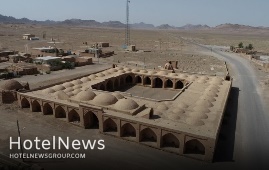
Three Qajar-era (1789-1925) caravanserais in Tabas, eastern South Khorasan province, have recently been demarcated help their legal boundaries and properties, a local tourism official has said. “New boundaries have been defined for Khan, Chehel Payeh, and Deh-e Mohammad caravanserais in a bid to curb illegal constructions within their boundaries,” Parisa Jamshidi announced on Sunday. The caravanserais, which are among the candidates for a collective inclusion in UNESCO’S cultural heritage list, has been recently restored, the official noted. Over 70 billion rials ($1.7 million at the official exchange rate of 42,000 rials per dollar) has been invested in the restoration projects of the historical inns so far, she added. Caravansary (also Caravanserai or Caravansaray) is a building that served as the inn of the Orient, providing accommodation for commercial, pilgrim, postal, and especially official travelers. According to Encyclopedia Iranica, from the number of surviving caravansaries and their sizes, it is clear that in Safavid and Qajar times there was a state architectural department that was specifically concerned with the construction of caravansaries and stations on the overland routes. Furthermore, in the cities, several caravansaries were erected as lodging houses, depots, and commercial offices in the vicinity of the bazaars. A typical caravansary consists of a square or rectangular plan centered around a courtyard with only one entrance and arrangements for defense if necessary. Whether fortified or not, it at least provided security against beasts of prey and attacks by brigands. Iran’s earliest caravanserais were built during the Achaemenid era (550 -330 BC). Centuries later, when Shah Abbas I assumed power from 1588 – to 1629, he ordered the construction of network caravanserais across the country. Such roadside inns were originally built in various epochs along ancient caravan routes in the Muslim world to shelter people, their goods, and animals. The former Silk Roads may be the most famous example dotted by caravanserais.
Create: Nov 3, 2021 Edit: Nov 3, 2021 Regional News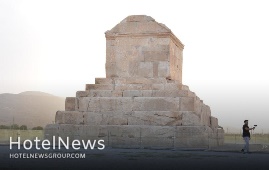
Iranian government has allocated a sum of 200 billion rials (about $4.7 million at the official exchange rate of 42,000 rials per dollar) to develop tourism infrastructure at the UNESCO-designated Pasargadae. A budget of 200 billion rials has been allocated to Pasargadae after President Ebrahim Raisi visited the Achaemenid site earlier in October, a senior tourism official, Javad Vahedi, said on Friday. The Pasargadae complex, as a magnificent World Heritage site, has a high tourism potential in the field of cultural and historical tourism, and we must plan to attract more tourists,” the official explained. Situated about 50 km north of Persepolis, Pasargadae was the first dynastic capital of the Achaemenid Empire, founded by Cyrus II the Great, in Pars, the homeland of the Persians, in the 6th century BC. Its palaces, gardens, and the mausoleum of Cyrus are outstanding examples of the first phase of royal Achaemenid art and architecture and exceptional testimonies of Persian civilization. The UNESCO World Heritage site is also home to a complex water supply system for the time that comprises cisterns, tunnels, underground canals, and ducts, which are locally known as qanats. It is believed that the development of qanats began about 2,500 or 3,000 years ago in Persia (Iran), and the technology spread eastward to Afghanistan and westward to Egypt. Although new qanats are seldom built today, many old qanats are still used in Iran and Afghanistan, chiefly for irrigation. The 160-ha archaeological site of Pasargadae presents some of the earliest manifestations of Persian art and architecture. It includes, among other monuments, the compact limestone tomb on the Morgab plain that once held Cyrus the Great’s gilded sarcophagus; Tall-e Takht (“Solomon’s Throne”), a great fortified platform built on a hill and later incorporated into a sprawling citadel with substantial mud-brick defenses; and the royal ensemble, which consists of several palaces originally located within a garden layout (the so-called “Four Gardens”). Pasargadae became a prototype for the Persian Garden concept of four quadrants formally divided by waterways or pathways, its architecture characterized by refined details and slender verticality. Pasargadae stands as an exceptional witness to the Achaemenid civilization. The vast Achaemenid Empire, which extended from the eastern Mediterranean and Egypt to the Hindus River in India, is considered the first empire to be characterized by a respect for the cultural diversity of its peoples. This respect was reflected in the royal Achaemenid architecture, which became a synthesized representation of the empire’s different cultures. Pasargadae represents the first phase of this development into a specifically Persian architecture which later found its full expression in the city of Persepolis.
Create: Oct 31, 2021 Edit: Oct 31, 2021 Regional News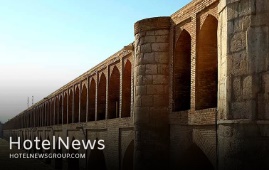
A selection of 200 “untold stories” about Isfahan is now available for you to re-discover the ancient city, which has long been nicknamed as “half the world”. Each story is narrated within a one-minute video clip in different languages to make culture lovers and avid travelers familiar with the off-the-beaten tracks, lesser-known destinations, souvenirs, foods, traditions, rituals, cultural heritage, handicrafts, and above all the hospitable people of Isfahan. Directed by Iranian globetrotter and researcher Majid Erfanian, the clips have been produced jointly by Isfahan Chamber of Commerce, Industries, Mines and Agriculture (ICCIMA), and the private company of Rah Abrisham Iranian Zamin. 100 of the videos, containing 100 fascinating stories, had already been uploaded to social media outlets, while the others were unveiled in an official ceremony hosted by the ICCIMA on Saturday evening. The event was attended by the deputy tourism minister Ali-Asghar Shalbafian, Isfahan governor-general Seyyed Reza Mortazavi, the mayor of Isfahan Ali Qasemzadeh, and Alireza Salarian, the head of Representative Office of Ministry of Foreign Affairs in Isfahan as well as a host of travel insiders, reporters, and journalists who discussed ways to jumpstart tourism. Erfanian stressed the need for greater public awareness about the cultural heritage of the ancient land, saying the “untold stories” are produced for that purpose. “Redefining destinations has rarely happened in the field of traveling [in the country], and now the city [of Isfahan] is a forerunner of such a trend to express its tourism brand in a new way,” he said. Talking about the clips, Erfanian said” “In these multi-language videos, we have tried to put the spotlight on inaccessible or lesser-known historical sites, foods, intangible heritage, people…. characters, craftsmen and figures who have played a role in shaping the identity of Isfahan.” “Sister cities of Isfahan, the diversity of religions, and intangible heritage are amongst other elements we have addressed in the videos,” he added. In an address to the unveiling ceremony, the deputy tourism minister used the context of modern architecture to discuss ways to highlight contemporary Isfahan shoulder to shoulder with its historical core. “We see in the videos that they mostly bring centuries-old architecture and culture into focus, however, we should consider casting a new light on the modern side of Isfahan as well.” “In the production of extra videos, newer ideas may be added to improve the quality of the work,” Shalbafian added. The governor-general of Isfahan reminded the attendees of the unique feature of stories and narratives, in general, to preserve cultural heritage for the coming generations. “In all over the world, paying attention to stories and narratives is of special importance for the development of tourism….. and we have many of such stories that have been forgotten in the course of history.” What you have done in this project is to revive such stories and distinct identities that if ignored, will lead to their disappearance, Mortazavi explained. Ali Karbasizadeh, a senior advisor to the ICCIMA, expressed the need for paying much more attention to the tourism industry, content production, training of all stakeholders and activists, conducting relevant studies, productive investments, tourism startups, and further cooperation with other provinces to develop the tourism paradigm of the country. Furthermore, Karbasizadeh discussed the advantage of adequate official holidays in Iran, saying the number of national holidays in Iran, which has a pivotal role in domestic tourism, is currently insufficient in comparison to many other countries. “If this issue is not addressed and solved, our efforts in other areas would not have desired results.” Salarian for his part noted that making one-minute videos of Isfahan is a good fit. “When we sent [some of the earliest] clips of the series to our embassies in various countries, they expressed a wish to have them translated into other languages as well….Now I see that this has happened.” “Even the municipality [of Isfahan] has produced a series of professional five-minute videos in ten languages that are well received by the audiences.” “Isfahan is one of the important destinations for the high-ranking Iranian officials and visiting officials from other countries. Therefore, it has a unique stance in the field of tourism that should be taken into account,” the senior diplomat explained. Finally, the mayor of Isfahan outlined the importance of storytelling for the time being and in various fields including tourism, saying: “Story [and storytelling] still works in the present day even in psychiatric discussions, story therapy is a growing concept.” “We are ready to expand cooperation and join hands with other activists in the realm of tourism because Isfahan has enormous potential to become a major destination for international travelers,” Qasemzadeh said. Half the world? Soaked in a rich history, Isfahan was once a crossroad of international trade and diplomacy in Iran and now it is one of Iran’s top tourist destinations for good reasons. It is filled with many architectural wonders such as unmatched Islamic buildings, bazaars, museums, Persian gardens, and tree-lined boulevards. It's a city for walking, getting lost in its mazing bazaars, dozing in beautiful gardens, and meeting people. Isfahan is renowned not only for the abundance of great historical bridges but also for its ‘life-giving river’, the Zayandeh-Rood, which has long bestowed the city an original beauty and fertility. Isfahan has long been nicknamed as Nesf-e-Jahan which is translated into “half the world”; meaning seeing it is relevant to see half the world. In its heyday, it was also one of the largest cities in the region with a population of nearly one million. The cool blue tiles of Isfahan's Islamic buildings, and the city's majestic bridges, contrast perfectly with the encircling hot, dry Iranian countryside. The huge Imam Square, best known as Naghsh-e Jahan Sq. (literary meaning “Image of the World”), is one of the largest in the world (500m by 160m), and a majestic example of town planning. Constructed in the early 17th century, the UNESCO-registered square is punctuated with the most interesting sights in Isfahan. It was laid out under the reign of the Safavid ruler, Shah Abbas the Great, to signal the importance of Isfahan as the capital of his powerful empire. It is hemmed on four sides by magnificent buildings: to the east, the Sheikh Lotfollah Mosque; to the west, the palace of Ali Qapu; to the north, the portico of Qeysarieh; and to the south, the eminent Imam Mosque. “The square was at the heart of the Safavid capital’s culture, economy, religion, social power, government, and politics. Its vast sandy esplanade was used for celebrations, promenades, and public executions, for playing polo and for assembling troops,” according to the UNESCO website. Right at the northern limit of the Imam Square, one will find “Qeysarieh Gate”, which leads to the unique and unforgettable “Grand Bazaar of Isfahan”. This vaulted marketplace is one of the largest and most labyrinthine bazaars in the country. Shops offering handicrafts, souvenirs, jewelry, silverware, traditional ceramics, and authentic Persian carpets. Modern Isfahan is now home to some heavy industry, including steel factories and a nuclear facility on its outskirts, however, its inner core wants to be preserved as a priceless gem. The city is also home to a gigantic, professional, and state-of-the-art healthcare city, which is a major destination in the realm of medical tourism. Unknown destination Even before the pandemic, Iran’s tourism was already grappling with some challenges, on top of those Western “media propaganda” aimed at scaring potential travelers away from the Islamic Republic. Some experts believe Iran is still somehow “unknown” for many potential travelers due to such a “media war”. They, however, consider bright prospects for the tourism sector of the country if it vigorously pursues comprehensive strategies to counter U.S.-led propaganda and strict sanctions, yet does its best to loosen tough travel regulations.
Create: Oct 26, 2021 Edit: Oct 27, 2021 Regional News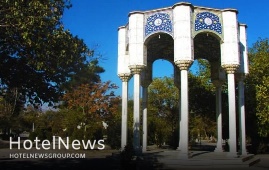
Ibn Babawayh is a vast historical cemetery located in Rey, southern Tehran, in which many Iranian figures have been laid to rest. It is named after Ibn Babawayh who was an Islamic theologian and the author of one of the “Four Books” that are the basic authorities for the doctrine of Twelver Shi’ism. Also called Sheikh Saduq, Ibn Babawayh, whose full name is given as Abu Jafar Muhammad ibn Abu al-Hasan Ali ibn Husayn ibn Musa al-Qummi, was born in c. 923 CE, Khorasan, northeast Iran, and he died in Ray in 991. Originally built during the reign of Samanids (819-999), the cemetery has been ruined many times, and for various reasons, such as the Mongol invasion (1219-1221 CE), several civil wars, and also natural disasters. There is an interesting story behind the construction of the current cemetery which occurred during the Qajar era. Once, as Haj Mohammad Baqer Khansari writes in Rozat al-Janat, heavy rain destroyed and made a hole in the old cemetery. Workers went to repair the destruction, but they found an intact corpse and an inscription in the cellar of the mausoleum. Based on the inscription, the mausoleum was built 800 years ago. By the way, the news of finding an intact corpse in the mausoleum of Sheikh Saduq reached the court and the king sent an envoy to the site to confirm the truth of the story. His current tomb consists of a groin stone vault with eight pillars decorated with beige and blue tiles and is the site of pilgrimage for the Muslims. In addition, the atmospheric cemetery built around the tomb of Sheikh Saduq is one of the most revered graveyards in the ancient town of Rey. Wandering around the cemetery, you come across the graves of famous Iranian figures like Gholam-Reza Takhti, the popular Olympic gold medalist wrestler, Ali-Akbar Dehkhoda, the well-known linguist, poet, and scholar, Hossein Behzad, the eminent miniaturist, Jalal Al-e Ahmad, the contemporary writer, and many others. There used to be many private family mausoleums featuring beautiful historical buildings in Ibn Babawayh, many of which are destroyed now due to urban development projects. Rey was one of the capital cities of the Parthian empire (3rd century BC–3rd century CE) and it was captured by the Muslim Arabs in 641 CE. During the reign of the Muslim caliph al-Mahdi in the 8th century, the city grew in importance until it was rivaled in western Asia only by Damascus and Baghdad. According to Britannica, Islamic writers described it as a city of extraordinary beauty, built largely of fired brick and brilliantly ornamented with blue faience (glazed earthenware). It continued to be an important city and was briefly a capital under the rule of the Seljuqs, but in the 12th century, it was weakened by the fierce quarrels of rival religious sects. In 1220 the city was almost destroyed by the Mongols, and its inhabitants were massacred. Most of the survivors of the massacre moved to nearby Tehran, and the deserted remnants of Rey soon fell into complete ruin.
Create: Oct 25, 2021 Edit: Oct 25, 2021 Regional News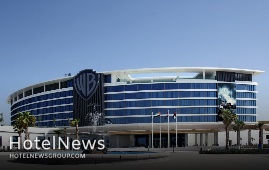
Miral, Abu Dhabi’s leading curator of magnetic experiences in collaboration with Warner Bros., home to one of the most well-known and successful collections of brands and characters in the world, announced today that The WB Abu Dhabi hotel on Yas Island, operated by Hilton under the Curio Collection brand, will open its doors to guests on 11 November 2021, inviting guests to see their favorite stories and characters brought to life through unique hospitality experiences that only the rich history and storied legacy of Warner Bros. could offer. Featuring one of the finest collections of Warner Bros. archives, guests at the world’s first Warner Bros. hotel will be treated to a journey of discovery through film and television, enjoying Warner Bros.’ rich history and library of timeless productions at every touchpoint from arrival to check-out. While dining in one of five of the restaurants on the property, you can listen as the piano from “Westworld” plays a familiar tune. Visitors can stroll through the lobby or admire 360-degree city and sea views alongside their favorite props and costumes from Warner Bros. films and TV shows. And kids and families can ring up one of their favorite Looney Tunes characters for a room service treat brought to them by the Wascally Wabbit, Bugs Bunny himself. Guests of The WB Abu Dhabi hotel begin their story as they pull up to the hotel and are greeted by digital screens that span the height of the building, playing original content created for the hotel. Before entering the hotel visitors won’t want to miss the iconic “Friends” fountain, guests will then enter the lobby and be drawn to the hotel’s uniquely designed lobby columns. As guests continue their journey, the storytelling experience is further enriched with guest room corridors displaying a curated gallery of artwork. Each of the hotel’s 257 rooms is furnished with touches that tie to the legacy of rich storytelling that makes Warner Bros. unique. The curated guestroom artwork will be inspired by three themes. The first theme, “From Script to Screen,” highlights standout moments from Warner Bros.’ movies and shows and documents the journey from the written page to the final shot. The second theme, “Artist Confidential,” celebrates a variety of talent in front of and behind the camera in some of Warner Bros.’ favorite productions. The third theme, “The Vault” features rarely seen images from Warner Bros.’ most memorable archives. Complementing the hotel’s unique design is an extensive and world class food and beverage program featuring five dining options catering to both adults and children. Craft Services, located in the lobby lounge, offers a relaxing coffee break after a busy day, while Sidekicks is the perfect place for socialising and interacting while enjoying a flavorful international menu. For those lounging by the pool in cabanas and sunbeds, The Matinee provides a casual dining option. Additionally, guests looking to indulge in an elegant dining experience, can visit The Director’s Club, or enjoy an experience at The Overlook, a fabulous lounge with a relaxing infinity pool and beautiful 360-degree city, theme park and sea views. The hotel is home to a host of leisure amenities for guests to enjoy, whether that’s lounging by the family pool area, working out in the fitness center, relaxing in the spa, exploring the artwork and props or shopping in the Warner Bros. store, the Prop Shop. For younger guests, the Kid’s Club will offer a vibrant and playful space designed to bring Warner Bros.’ characters to life. Some of WB’s world-renowned characters such as Bugs Bunny, Daffy Duck and others will participate in entertaining activities throughout the hotel providing guest memories that will last a lifetime. The hotel also caters for business meetings and events with a large ballroom and expansive meeting room facilities. The WB Abu Dhabi is located adjacent to the award-winning Warner Bros. World™ Abu Dhabi, the world’s largest indoor theme park which features six truly immersive lands, including DC’s Metropolis and Gotham City, Cartoon Junction, Bedrock, Dynamite Gulch and Warner Bros. Plaza, along with 29 state-of-the-art exhilarating rides, interactive family-friendly attractions and unique live entertainment. The hotel is also a walking distance from Yas Waterworld and a 5- minute drive to all other Yas Island unique attractions and experiences,
Create: Oct 16, 2021 Edit: Oct 16, 2021 International News
The Travel & Tourism sector’s continued sluggish recovery will see its year-on-year contribution to global GDP rise by less than one third in 2021, according to new research from the World Travel & Tourism Council (WTTC). WTTC, which represents the global Travel & Tourism private sector, says the recovery of the sector has been hampered by the lack of international coordination, severe travel restrictions and slower vaccination rates in some parts of the world which still hamper many regions of the world. In 2019, the Travel & Tourism sector generated nearly USD 9.2 trillion to the global economy, however in 2020, the pandemic brought Travel & Tourism to an almost complete standstill which resulted in a 49.1% drop, representing a punishing loss of nearly USD$ 4.5 trillion. While the global economy is set to receive a modest 30.7% year on year increase from Travel & Tourism in 2021, this will only represent USD 1.4 trillion and is mainly driven by domestic spending. The economic modelling was conducted by Oxford Economics on behalf of WTTC and calculated a baseline scenario based on the current global vaccination rollout, consumer confidence and relaxed travel restrictions in some in regions around the world. The research reveals that at the current rate of recovery, Travel & Tourism’s contribution to the global economy could see a similar moderate year on year rise of 31.7% in 2022. Last year, WTTC revealed the loss of a staggering 62 million Travel & Tourism jobs around the world and with the current pace of recovery, jobs are set to rise by only 0.7% this year. Similarly, research shows a more hopeful potential year-on-year jobs rise across the sector next year, by a positive 18%. Julia Simpson, WTTC President & CEO said: Our research clearly shows that while the global Travel & Tourism sector is beginning to recover from the ravages of COVID-19 there are still too many restrictions in place, an uneven vaccine rollout, resulting in a slower than expected recovery of just under a third this year. Last year, 62 million Travel & Tourism jobs were lost globally, and our data shows a rise of a meagre 0.7% this year. While next year is looking more positive in terms of the global economy and jobs, the current rate of recovery is simply not fast enough and is in the most part driven by domestic travel, which will not achieve a full economic recovery. If governments can start looking internationally and support Travel & Tourism with simplified rules to enable the safe return of travel, there is the opportunity to save jobs and boost economic wealth”. According to the research, the sector’s contribution to global GDP and the rise in jobs could be more positive this year and next, if the following measures are met: Allow fully vaccinated travellers to move freely, irrespective of their origin or eventual destination, removing complex tiered systems. The implementation of digital solutions which enable all travellers to easily prove their COVID status, so in turn speeding up the process at borders around the world. Recognition of all vaccines authorised by the World Health Organisation (WHO) and/or any of the Stringent Regulatory Authorities (SRA).Agreement from all relevant authorities that international travel is safe with enhanced health and safety protocols. The future could be brighter The research shows that if these four vital rules are followed before the end of 2021, the impact on the global economy and jobs could be significant. According to the data, the sector’s contribution to the global economy could jump by 37.5% – reaching USD 6.4 trillion this year (compared to USD 4.7 trillion in 2020). However, there is still hope if restrictions continue being lifted and with more international cooperation, governments could bring back nearly 19 million jobs before the year ends (up 6.8%). The trend continues into next year when the sector’s contribution to the global economy could see a year on year rise of 34%, reaching USD 8.6 trillion, close to 2019, a record year for Travel & Tourism. Similarly, jobs could surpass 2019 levels – up 20.1% year on year, to more than 349 million.
Create: Oct 9, 2021 Edit: Oct 9, 2021 International News
South Florida’s iconic Boca Raton Resort & Club announces the most significant evolution in its history, and its new-again name —The Boca Raton. For over four decades, from 1944 to 1988, The Boca Raton name signified a luxurious lifestyle unmatched worldwide. Over the coming months, The Boca Raton will usher in an entirely new perspective on travel, A New Golden Era. A New Golden Era at The Boca Raton and The Boca Raton Club promises an unrivaled destination beginning with a $175 million Phase One physical transformation to be unveiled during Winter 2021/2022. There will be bespoke enhancements to every guest experience, from exceptional accommodations to dynamic culinary concepts and innovative programming. The Boca Raton has a remarkable history as an internationally recognized landmark and a private escape for in-the-know travelers,” said Daniel A. Hostettler, President & CEO of The Boca Raton. “A New Golden Era will pay homage to the resort’s storied past while introducing innovative new amenities and experiences that will inspire both members and guests, and define The Boca Raton as one of the world’s most preeminent luxury resorts and private clubs.” Five Distinct Hotel Experiences, One Iconic Resort. The Boca Raton will feature a collection of five hotels located Beachside and Harborside, each with its own personality and style. Beach Club: The oceanfront luxury escape features three pools set on a private stretch of golden beach. The hotel’s new Mediterranean dining concepts, Marisol and the lobby lounge, are curated by notable lifestyle guru Colin Cowie. Bungalows: Ideal for extended stays, this three-story residential hideaway features two-bedroom suites with full kitchens and furnished terraces and balconies. Tucked in a serene corner of the property surrounded by a lush landscape, the Bungalows offer a private pool and dedicated amenities. Yacht Club: The adult-only, all-suite luxury hotel embodies refined lakefront leisure. Elegant suites feature private balconies, and views of Lake Boca Raton and its yacht-lined promenade. Personal concierges and floor valets prepare every detail for the perfect escape. Reopening Winter 2021. Cloister: Stay where it all started amidst grand architecture, lush grounds and hidden gardens as an unforgettable backdrop. Located in the heart of the action, the resort’s original structure is just steps from the 18-hole golf course, Racquet Club and spa. The Cloister is being revitalized and will reopen with immersive experiences and rotating art collections. Reopening Winter 2021. Tower: Providing elevated perspectives for sophisticated travelers, the 27-story tower is undergoing a $45 million complete transformation by Rockwell Group. With extraordinary vistas of sparkling waterways, the all new luxury hotel will introduce flexible suite configurations—two to three bedrooms—artful touches, bespoke amenities and butler service. Opening first quarter 2022. A World of Flavor. From fine dining to waterfront bites, The Boca Raton is creating one of the most exciting culinary destinations in the country, including four signature experiences with Major Food Group (MFG). The Flamingo Grill, opening this month, offers a glamorous take on the mid-century American chophouse. Forthcoming restaurants include Sadelle’s, the inventive, perennially packed brunch institution with locations in New York and Las Vegas, and all new concepts exploring Japanese and Italian cuisine. Only at The Boca Raton. This winter, the resort will unveil Harborside Pool Club, a four-acre lakefront oasis featuring luxury cabanas, four pools, 450-foot lazy river, two three-story high slides, double standing wave, retail boutique, 7,100 square foot event lawn, 5,000 square foot kids club, and a teens lounge, as well as new waterfront dining options. The Boca Raton’s 40,000 square foot wellness oasis has unveiled a new name, Spa Palmera, and new treatments. This winter, Spa Palmera will showcase a refreshed design and additional programming. New one-of-a-kind experiences include a supercar racing adventure, perfect for thrill seekers. Fashionistas may opt for a curated shopping day with a personal stylist, while couples can spend the afternoon on a private boat, complete with snorkeling and live entertainment. Resort owners MSD Partners and Northview Hotel Group are stewarding the property into its new phase with an award-winning team of builders and creators. Visionaries include architecture and design firm Rockwell Group, landscape architecture firm EDSA, branding and marketing agency King & Partners, and GarciaStromberg—a firm of architects, designers and artists.
Create: Jul 17, 2021 Edit: Jul 17, 2021 International News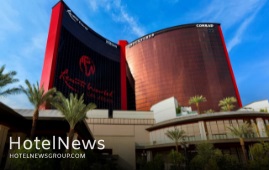
Resorts World Las Vegas, the first resort built on the Las Vegas Strip in more than a decade, officially swung open its doors to the public at 11 p.m. on Thursday, June 24. The monumental launch of the highly anticipated resort included a star-studded, first-look party for invited guests earlier in the evening that featured a ceremonial ribbon cutting officiated by Genting CEO & Chairman K.T. Lim. And Resorts World Las Vegas’s President Scott Sibella. Lim and Sibella were joined by Hilton President & CEO Chris Nassetta, Nevada Governor Steve Sisolak, Clark County Commission Chair Marilyn Kirkpatrick, Clark County Commissioner Tick Segerblom and Nevada Congresswoman Dina Titus. “This is a very proud moment for Genting and our Resorts World Las Vegas family as we are honored to officially open our doors,” said Scott Sibella, President of Resorts World Las Vegas. “This spectacular resort was designed to usher in a new era of hospitality in Las Vegas with unsurpassed dining and entertainment, an array of luxury hotel accommodations, and new-age technology. We are excited to finally be able to present this resort to the world and officially welcome guests to experience our exceptional amenities firsthand. We are grateful for all of the support we received during our opening and truly hope our community and visitors enjoy all of the hard work that went into creating this incredible property.” “We are thrilled to unveil Resorts World Las Vegas – an incredible property that marks the return of our signature Hilton hospitality on the Strip,” said Chris Nassetta, President and CEO of Hilton. “Together, Hilton, Genting and Resorts World Las Vegas are committed to delivering unforgettable experiences for our guests, and this new resort raises the bar for Las Vegas. As we offer outstanding hotels, dining, entertainment and design, we are thrilled to welcome guests to the entertainment capital of the world for years to come.” The integrated luxury resort redefines the hospitality standard in Las Vegas with the following amenities: Exceptional Accommodations – Through a historic partnership with Hilton, Resorts World Las Vegas offers 3,500 luxury guest rooms and suites from three premium Hilton brands – the largest multi-brand deal in Hilton’s history – including the largest Conrad Hotels & Resorts property in the world, one of the first LXR Hotels & Resorts locations in the U.S., and a marquee Hilton Hotels & Resorts hotel. Each brand features its own entrance, lobby, and distinct selection of guest accommodations. Resorts World Las Vegas is also a part of Hilton Honors, the award-winning guest-loyalty program for Hilton’s 18 distinct brands. Las Vegas Hilton at Resorts World features 1,774 full-service guest rooms and suites ranging from 400 to 3,300 square feet with smart, elevated amenities in a comfortable and refined setting. Conrad Las Vegas at Resorts World offers 1,496 contemporary and luxury guest rooms and suites ranging from 550 to 2,800 square feet, boasting luxe amenities and a curated art program. Crockfords Las Vegas, LXR Hotels & Resorts showcases an intimate collection of 236 impeccably designed guest rooms, suites, and villas ranging from 550 to 7,000 square feet that feature lavish accommodations, upscale amenities, and highly personalized service. Technology – Resorts World Las Vegas offers various new-age technology advancements across the property, including mobile check-in and digital key via the Hilton Honors app, allowing for a contactless arrival experience, an AI-powered digital concierge named Red, and more. The resort also boasts over 200,000 square feet of captivating LED displays, including a 100,000 square-foot West Tower LED screen (one of the largest LED building displays in the U.S.). The first resort to partner with Grubhub, Resorts World Las Vegas guests can exclusively enjoy Grubhub’s advanced ordering technology through On The Fly at Resorts World powered by Grubhub. This innovative solution allows guests to conveniently order and charge the cost to their room or credit card via the Grubhub app from the resort’s 40 food and beverage concepts and select retail shops for pickup or delivery. Guests can send orders to their rooms as well to the resort’s 5.5-acre pool complex. Casino – Resorts World Las Vegas features an unrivaled gaming experience with the most innovative casino technology. With 117,000 square feet of gaming space including 1,400 slots, 117 table games, a dedicated Poker room and 30 poker tables, high-limit areas, and a sportsbook, the next-generation casino will redefine the traditional gaming experience by introducing the most technologically advanced casino and gaming operation within one integrated resort with Cashless Wagering, RFID bet tracking, and Ticket-in-Ticket out (TITO) at the table. Through the Resorts World Las Vegas Mobile app, guests can pay for gaming, entertainment, or hotel offerings from the palm of their hand, and check their Genting Rewards account balances, receive offers, and rewards and stay connected to the array of amenities. Resorts World Las Vegas will also be the first Las Vegas casino where consumers can utilize a digital login and cashless wagering experience at both slots and table games. Dining – Guests can choose from over 40 food and beverage options at Resorts World Las Vegas, ranging from fine-dining and quick-service venues to original and exclusive concepts like Kusa Nori, Genting Palace, Sun’s Out Buns Out, Famous Foods Street Eats, Wally’s Wine & Spirits, and Craig’s Vegan. Entertainment – The resort’s 5,000-capacity concert and entertainment venue is outfitted to host a myriad of affairs – from star-studded concerts to convention, corporate and sporting events. Featuring the largest and tallest performance stage with the furthest seat only 150 feet from the stage, the brand-new, multi-level venue will provide an intimate, high-energy experience with unparalleled comfort, unobstructed sightlines, and an unmatched immersive audio experience. The joint development between Resorts World Las Vegas and AEG Presents will be exclusively programmed and operated by Concerts West and is set to introduce the next wave of superstar entertainment partners with exclusive engagements by Celine Dion, Carrie Underwood, Katy Perry, and Luke Bryan beginning this November. Retail – With approximately 70,000 square feet of dedicated retail space named The District, Resorts World Las Vegas presents two levels of unique boutique shops and experiential offerings from luxury and lifestyle brands, including Fred Segal, Judith Leiber, Hervé Léger, and Pepper. Nightlife – In partnership with Zouk Group, Singapore’s leading lifestyle and entertainment company, the resort features a multiplicity of experiences in one entertainment complex, including Zouk Nightclub and Ayu Dayclub featuring can’t-miss performances by resident DJs Tiësto and Zedd, in addition to a diverse lineup of talent featuring an unprecedented number of female artists including Becky G, Madison Beer, Charly Jordan, and Madds. Meetings – In addition to 250,000 square feet of flexible meeting and banquet space complete with 50 multi-functional meeting rooms, Resorts World Las Vegas will debut the first connector station to the Las Vegas Convention Center (LVCC) and Vegas Loop via an innovative underground transportation system later this summer, providing convention-goers a rapid transportation solution between the resort and the LVCC via all-electric vehicles in minutes. Pool and Spa – The resort offers additional amenities, including an expansive 5.5-acre pool complex featuring five unique pool experiences, including the only infinity-edge pool on the Strip, Additionally, the resort will debutea spectacular 27,000-square-foot, world-class spa experience, which will open later this summer.
Create: Jul 1, 2021 Edit: Jul 1, 2021 International News
